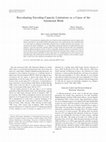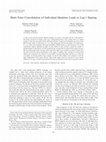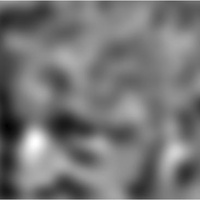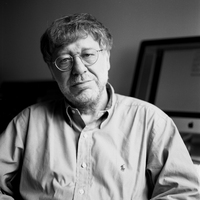Papers by Patrik Pluchino
Journal of Experimental Education

Frontiers in …, Jan 1, 2011
Despite increasing interest in the topic, the extent to which linguistic processing demands atten... more Despite increasing interest in the topic, the extent to which linguistic processing demands attentional resources remains poorly understood. We report an empirical re-examination of claims about lexical processing made on the basis of the picture–word interference task when merged in a dual-task psychological refractory period (PRP) paradigm. Two experiments were conducted in which participants were presented with a tone followed, at varying stimulus onset asynchronies (SOAs), by a picture–word stimulus. In Experiment 1, the phonological relatedness between pictures and words was manipulated. Begin- and end-related words decreased picture naming latencies relative to unrelated words. This effect was additive with SOA effects. In Experiment 2, both the semantic and the phonological relatedness between pictures and words were manipulated. Replicating Experiment 1, effects arising from the phonological manipulation were additive with SOA effects on picture naming latencies. In contrast, effects arising from the semantic manipulation were under additive with SOA effects on picture naming latencies, that is, semantic interference decreased as SOA was decreased. Such contrastive pattern suggests that semantic and phonological effects on picture naming latencies are characterized by distinguishable sources, the former prior to the PRP bottleneck and the latter at the PRP bottleneck or after. The present findings are discussed in relation to current models of language production.

Computers & Education, Jan 1, 2013
This study used eye-tracking methodology in the school setting to examine fourth graders' online ... more This study used eye-tracking methodology in the school setting to examine fourth graders' online processing of text and graphics while reading an illustrated science text. We were interested in identifying patterns of visual behavior, which was examined considering individual differences in reading comprehension, prior knowledge, and spatial ability. We also investigated the outcomes of learning from text by measuring free recall, factual knowledge, and transfer of knowledge. For an important advancement of research in this area, the link between processing and learning was also examined. Forty-nine 4th graders participated in a pretest, immediate, and delayed posttest design. Results of a cluster analysis using indices of firstand second-pass eye-fixation, as well as integrative saccades revealed three patterns of visual behavior varying for the level of integration of text and picture. Significant associations between eye-tracking data and reading comprehension and prior knowledge emerged. Moreover, the three patterns of visual behavior were significantly related to students' performances in the various learning tasks at both testing times. The greater integrative processing of the illustrated text was associated with higher learning performances. The significance of the study for educational implications is outlined.

…, Jan 1, 2011
If object-substitution masking (OSM) arises from mask representations replacing target representa... more If object-substitution masking (OSM) arises from mask representations replacing target representations, OSM should impede the formation of representations in visual short-term memory (VSTM). We utilized event-related potentials to examine the effect of OSM on target processing. An N2pc was observed on trials with delayed-offset masks, indicating that focused attention was directed to the target. The sustained posterior contralateral negativity (SPCN), an index of VSTM storage, was observed in delayed-offset trials only on trials with correct responses. This supports the hypothesis that inaccurate performance on delayed-offset trials arises from a failure to encode the target in VSTM. On cotermination trials, accuracy was high and neither the N2pc nor SPCN was observed. This indicates that, in the absence of masking, the task was accomplished by maintaining a diffuse attentional state that enabled the joint encoding of the potential target items.

Neuropsychologia, Jan 1, 2011
Neuroimaging studies attempting to isolate the neural substrate of visual short-term memory in hu... more Neuroimaging studies attempting to isolate the neural substrate of visual short-term memory in humans have concentrated on the behavior of neurons populating the posterior part of the parietal cortex as a possible source of visual short-term memory capacity limits. Using a standard change-detection task, fMRI studies have shown that maintenance of bilaterally encoded objects elicited bilateral increases of hemodynamic activation in the intra-parietal and intra-occipital sulci (IPS-IOS) proportional to the number of objects retained in visual short-term memory. We used a spatially cued variant of the change-detection task to record hemodynamic responses to unilaterally encoded objects using functional near-infrared spectroscopy (fNIRS). Electrophysiological studies that employed this task have shown that maintenance of unilaterally encoded objects elicited posterior unilateral (contralateral) increase in event-related negativity proportional to the number of objects retained in visual short-term memory. We therefore examined whether contralateral increases in oxy-hemoglobin concentration correlated with the number of retained objects. Contrary to the idea that bilateral increases in BOLD responses and unilateral increases in event-related negativity may be different reflections of the same underlying neural/functional processing, memory-related increases in oxy-hemoglobin concentration were found bilaterally even when objects had to be encoded unilaterally. The present findings suggest that EEG and fMRI/fNIRS techniques reveal distinct neural signatures of the mechanisms supporting visual short-term memory.

Journal of Experimental …, Jan 1, 2009
A number of researchers have emphasized the role of distractors intervening between successive ta... more A number of researchers have emphasized the role of distractors intervening between successive targets as the primary determinant of the attentional blink (AB) phenomenon. They argued that the AB is abolished when 3 or more targets are displayed as temporally contiguous items in rapidly presented serial sequences. In 3 experiments, the authors embedded 1-, 2-, or 3-digit targets among letter distractors in rapidly presented visual sequences. Across the experiments, both the number of targets and the lag between them were manipulated, producing different proportion of trials in which 3 temporally contiguous targets were presented in the test session. Evidence of an AB affecting the targets that followed the first target in these sequences was found in each experiment when the probability of a given target report was conditionalized on a correct response to the preceding targets, thus reinforcing the notion that some form of capacity limitation in the encoding of targets plays a central role in the elicitation and modulation of the AB effect.

Journal of Experimental …, Jan 1, 2007
A rapid serial visual presentation (RSVP) technique was used to investigate the role of the natur... more A rapid serial visual presentation (RSVP) technique was used to investigate the role of the nature of processing carried out on targets in the Lag-1 sparing phenomenon. Lag-1 sparing refers to a higher accuracy in the task associated with the 2nd target when the 2 targets are immediately successive in the RSVP stream relative to when there are 1 or 2 intervening items between the targets. In 5 experiments, 0, 1, or 2 digits were embedded with equal probability in RSVP streams of letter distractors. In 4 of the experiments, subjects identified the digits in some blocks of trials, and they counted the number of presented digits in other blocks. In a 5th experiment, the counting task was replaced with a digit-sum task. The most interesting results were those from trials with 2 digits. Lag-1 sparing was always evident when the task involved the explicit identification of the digits. In addition, Lag-1 sparing was evident when subjects were required to sum 2 digits or to count digits of a prespecified parity subclass (e.g., count only even digits). In striking contrast, Lag-1 sparing was absent when subjects were required to count the digits independent of their parity subclass. These results suggest that the occurrence of Lag-1 sparing depends on the type of mental representation that must be generated on the basis of target information.
Thesis Chapters by Patrik Pluchino
Conference Presentations by Patrik Pluchino

17:00 Coffee Break Sessioni parallele 17:30 A. Aula Magna Simposio: Se imparare significa sopratt... more 17:00 Coffee Break Sessioni parallele 17:30 A. Aula Magna Simposio: Se imparare significa soprattutto fatica: primi risultati di un progetto strategico dell'17:30 B. Aula Canova Workshop: Quando educare è una sfida: un progetto di inclusione dal nido alla scuola dell'infanzia Coordinatore: Adele Messieri (Fondazione Gualandi a favore dei sordi -Bologna) Discussant: Agata Maltese (Università degli Studi di Palermo) B.1 Opportunità e difficoltà a scuola per i ragazzi sordi Enrico Dolza Direttore Istituto dei sordi di Torino -Fondazione Gualandi a favore dei sordi di Bologna B.2 Un ambiente di educazione inclusiva per i piccoli: ideazione e progetto di un Nido d'infanzia Stefan Von Prondzinski Psicopedagogista -Fondazione Gualandi a favore dei sordi di Bologna B.3 Il "fare consapevole" al Nido: un giardino a disposizione Alberto Rabitti Atelierista, educatore -Fondazione Gualandi a favore dei sordi di Bologna B.4 Potenziamento prossimale al Nido: osservazione, propositi, strategie, criticità Beatrice Vitali Pedagogista -Fondazione Gualandi a favore dei sordi di Bologna B.5 Un progetto 0-6 anni: quale scuola dell'infanzia? Lorenzo Campioni Presidente Gruppo Nazionale Nidi e Infanzia -Fondazione Gualandi a favore dei sordi di Bologna B.6 Il ruolo degli educatori nella stimolazione linguistica tra i 24 e i 36 mesi Elisa Cangialeoni, Marta Tempestini Logopediste libere professioniste B.7 Posso parlare ma non voglio farlo: come motivare a usare il linguaggio bambini che preferiscono non farlo
… : HOW TO TAKE …, Aug 30, 2012
The EARLI SIG 2 is one of the twenty-two special interest groups of the European Association of L... more The EARLI SIG 2 is one of the twenty-two special interest groups of the European Association of Learning and Instruction. It focuses on how learning is influenced by the representation of the learning material, such as by way of text and pictures. However, as there is an explosion of new representations by the introduction of graphical interfaces, members of the SIG now consider multiple forms of representation, including, but not limited to, texts, pictures, graphs, diagrams, concept maps, animations, equations, virtual reality, information and scientific visualization, haptics, multimedia, hypermedia, and simulations. The SIG meets every two years, in alternation with the main EARLI conference, in order to establish continuity in collaborations of its members.











Uploads
Papers by Patrik Pluchino
Thesis Chapters by Patrik Pluchino
Conference Presentations by Patrik Pluchino